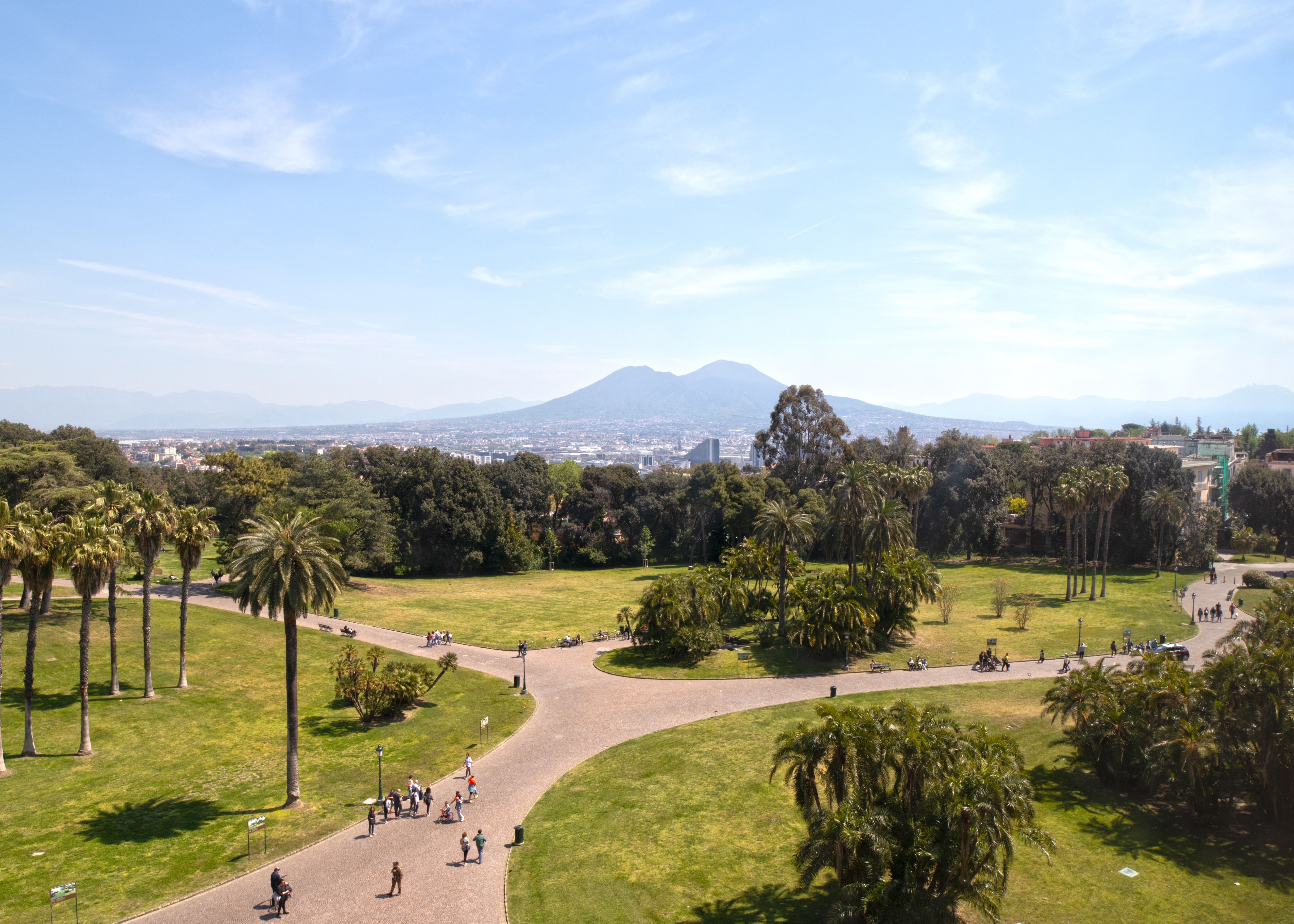
 Italian Botanical Heritage
Italian Botanical Heritage
Italian gardens: Royal Woods of Capodimonte, Naples
- WTI Magazine #127 May 16, 2020
-

 Italian Botanical Heritage
Italian Botanical Heritage
The Royal Woods of Capodimonte is the largest public park in the city of Naples. It has an extension of 134 hectares with about 400 plant entities classifiable in 108 families and 274 genera. The woodland belongs to a hunting lodge that in 1738 became the Royal Palace of Capodimonte, today completely dedicated to the role of Museum. It occupies the three floors of the building with the historical apartment and a rich Farnese collection on the first floor; the second floor houses the gallery with Neapolitan works from 1200 to 1700; while the third floor is dedicated to the collection of works of 1800 and contemporary art.
Within its perimeter there are 17 architectures including residences, cottages, artisan factories, warehouses and churches, as well as fountains and statues, vegetable gardens and orchards and a cemetery, that of the Capuchins of the Hermitage.
The Wood was commissioned by Charles III of Bourbon in 1734 and initially conceived as a hunting reserve, but with King Ferdinand II it was transformed into an English garden, taking on its present appearance: the result of the work of the botanist Dehnardt who, around the middle of the 19th century, transformed the gardens, enriching them with new tree species of exotic charm.
Access to the Park is from the Porta di Mezzo that leads to the large hemicycle from which the five avenues that have various forks and branches (over 100 paths) open in a fan shape. There is no lack of naturalistic scenery in a royal forest where, however, the plant zoning was functional to the types of hunting practiced by the king, so that densely arboreal areas with holm oaks, chestnut trees, hornbeams and elms were followed by shrub areas Myrtus communis, Ligustrum vulgare and Prunus laurocerasus. Interesting environment of the Park is the Casino della Regina with a precious walled eighteenth-century garden, of which today remains the citrus collection. The best preserved is the Garden of the Princes, modified around 1840 by Dehnhardt who introduced the palm trees in the prairie in front of the Casino dei Principi.
After much destruction and tampering, during the war and post-war period, the complex was recently recovered through careful restoration of the architectural and plant layout.
The Plants
Currently many specimens of Phoenix canariensis, Washingtonia, groups of Phoenix reclined and dwarf palms (Chamaerops humilis) and only sporadic or single specimens of Cycas revoluta, Butia capitata and Livinstona chinensis are observed in the park. Near the Porta di Santa Maria dei Monti is located the complex called Fabbricato Torre which includes garden areas with different uses. Since the 18th century it was divided into several independent areas: the "Garden of the Fruit Grove" for the production of fine fruit for the "King's Canteen"; the "Garden of Flowers" where pineapples and many varieties of flowers were grown; the "Garden of the Purpignera" for the reproduction of pineapples and horticultural crops; and finally the "Garden of the Bass Fruit Grove", used as a nursery.
In addition, there are the typical species of the Mediterranean maquis, such as the San Gennaro valley: a narrow gorge to the east of the main avenue, which cuts longitudinally the areas north of the forest, where the dominant species are the chestnut (Castanea sativa) and the mountain maple (Acer pseudoplatanus), flanked by the holm oak (Quercus ilex). The hazel (Corylus avellana), the white hornbeam (Carpinus betulus) and the downy oak (Quercus pubescens) are also frequent. The undergrowth is formed by numerous vegetal entities, common to the other valleys such as the stingray (Ruscus aculeatus) and, in the most humid areas, some species of ferns. From the "Stradone dell'Eremo" you can access one of the most evocative paths that descend into the valley floor and that winds in a curve between tall black pines (Pinus nigra) and firs, the only surviving specimens planted around 1834.